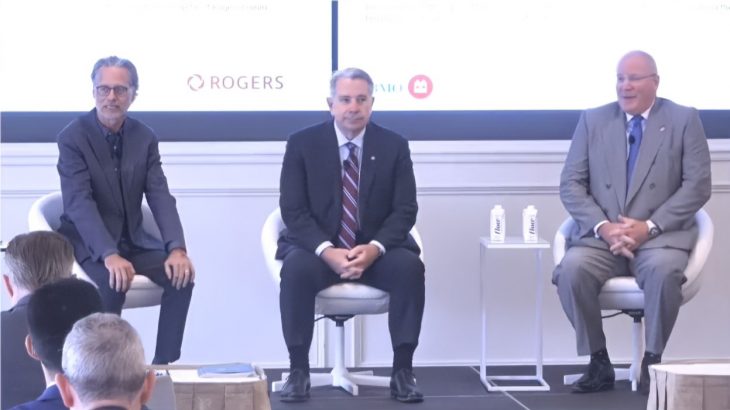
By Ahmad Hathout
Rogers CEO Tony Staffieri said Thursday that the CRTC’s decision to force the large telephone companies to open access to their last mile fibre networks “levels the playing field” with cable carriers who service the bulk of wholesale-based subscribers.
“We’ve been required to wholesale under the regulatory regime high-speed internet for quite some time,” Staffieri said during a third quarter conference call. “So it’s good to see a level playing field.”
The majority of wholesale-based competitors were using the large cable companies’ hybrid fibre-coax networks, which accounts for 75 per cent of all wholesale-based subscriptions, the CRTC said.
The decision means Bell and Telus will need to negotiate with wholesalers within six months for access to that direct fibre line to homes in Ontario and Quebec, which gives them an opportunity to offer faster internet speeds and more options.
The CRTC excluded the cable companies in part because their fibre builds are still in new developments, which have limited reach.
In the aftermath of the decision, Bell said it was cutting its spending on its fibre-to-the-home (FTTH) buildout over the next couple of years. Telus said it was still studying the decision.
While wholesalers said the decision was a step in the right direction, one outstanding issue is the rate at which they can negotiate for that access. The complaint is that the telcos are selling services at prices below the rate set by the CRTC, which results in them undercutting the competition, they say.
“When we look at the rates that have applied, they are not that different than the wholesale rates that we’ve had for our network over the last little while,” Staffieri said Thursday. “And we continue to improve our performance in that regulatory regime and figuring out the right value proposition to perform and…stabilize and improve our market share performance.”
As Rogers builds out its FTTH network, it is also hoping for some good news on the latest DOCSIS 4 modem technology, which is expected to deliver up to 10 Gbps download speeds.
Staffieri said the telecom has been “fast followers” of the technology’s development in the United States and said it is expecting the back half of next year “as the beginning of what you’ll see in terms of customer experience improvements.”
The telecom saw a 36 per cent jump in revenue to about $5.1 billion in the three months ending September 30, attributed to big boosts in internet and wireless.
But it saw a net loss of $99 million on income in part on higher acquisition costs, including those associated to the Shaw acquisition.
Wireless revenues were up 14 per cent to $2.58 billion, cable revenues were up 104 per cent to about $2 billion and even media was up 11 per cent to $586 million.
On mobile wireless, Rogers’s gross postpaid subscribers swelled by 127,000 to 556,000 subscribers in the quarter, with a total net gain over last year of 225,000 – an increase of 61,000 subscribers from the same quarter last year. The total postpaid base say a fair bit higher than last year, at 10.3 million.
The rate of defections, called churn, on postpaid was up 0.11 points to 1.08 per cent.
The telecom added more prepaid subscribers, up 31,000 from the same period last year for a total in the quarter of 263,000. However, it gained fewer net new subscribers at the rate of 36,000 this quarter compared to the 57,000 it added last year. The total prepaid base was up by 16,000 over the year to 1.28 million.
Mobile average revenue per user was up $2 to $58.8.
The telecom added 18,000 net new internet subscribers this quarter, up 12,000 from the same quarter last year. The total number of subscribers by the end of the quarter was 4.3 million.
The company also added 23,000 net new video subscribers, up by 16,000 from the comparable period for a total base of 2.75 million.
Home phone losses continued. The company lost 36,000 this quarter, larger than the 18,000 it lost last year. But the total base still increased by nearly 800,000 to 1.65 million.
Photo of Rogers CEO Tony Staffieri (middle).


